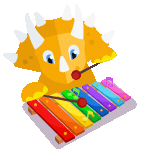What Makes Creole So Unique? A Fun Look at Its Roots
Haitian Creole may sound a little like French, but it has its own personality, history, and heart. It’s a language shaped by many voices and that’s exactly what makes it special.
A Language Born from Many Worlds
Creole was born during a time when people from Africa, Europe, and the Caribbean had to find ways to understand each other. It began as a way to communicate, but over time, it became a full language on its own.
Haitian Creole combines:
- French vocabulary
- African grammar patterns
- Taino and Spanish influences
That mix gives it a warm rhythm and a sound that’s fun and easy for kids to pronounce.
Everyday Language with a Big Heart
Creole isn’t just spoken in school or on TV—it’s the language of stories, laughter, and love in Haitian homes. It’s how people express their feelings, share jokes, and connect with others.
For kids, that makes it perfect: it’s expressive, colorful, and meant to be spoken out loud.
Fun Ways to Explore Creole
Language Treasure Hunt
Hide cards with simple Creole words around the house. When your child finds one, say the word out loud together and use it in a sentence.
Creole Sound Collage
Play audio clips of Creole phrases and make a collage with the words, pictures, or sounds they describe.
Language Tools Kids Will Love
With videos, games, songs, and printable worksheets, Dinolingo introduces Creole to kids ages 2–14 in a way that’s exciting and hands-on. Children hear real Creole, speak along, and learn while they play.
Creole is more than words it’s a blend of stories and songs, history and heart. And once kids start learning, they’ll feel just how special it is.
Sources:
Start Learning a New Language Today!
Best Language App for Kids.
7-day free trial. Then only $19/month. Cancel anytime.
